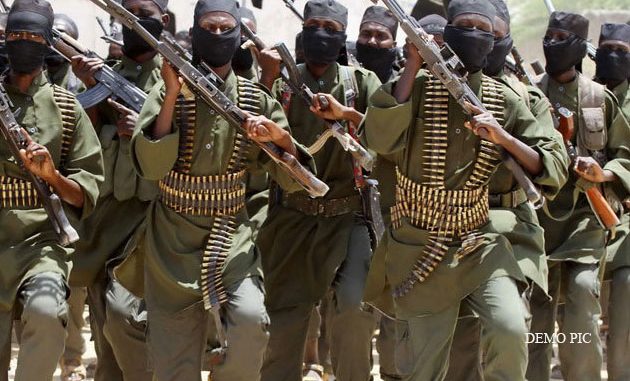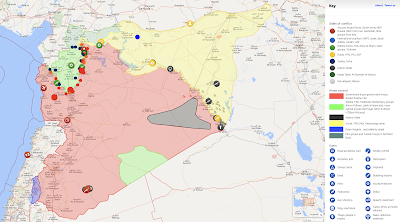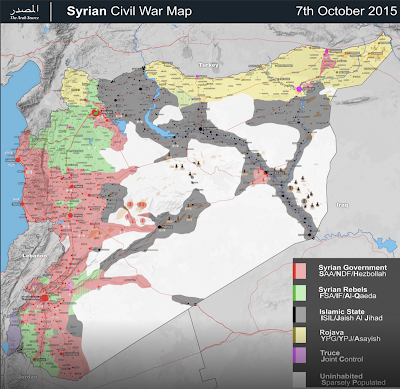
According to legislation passed by Congress in January 2013, the position of Lead Inspector General was created to oversee America’s overseas contingency operations. Under this legislation, the Inspectors General of the Department of Defense, Department of State and United States Agency for International Development must supply reports to Congress on a quarterly basis for certain operations. The most recent report supplies us with a very interesting look at the American-led Operation Inherent Resolve (OIR) which has the following mission:
“In conjunction with partner forces Combined Joint Task Force – Operation Inherent Resolve (CJTF-OIR) defeats ISIS in designated areas of Iraq and Syria and sets conditions for follow-on operations to increase regional stability.”
In Iraq, American forces are partnered with the Iraqi Army and Air Force, the Counter Terrorism Service, the Federal Police and the Kurdish Peshmerga. In Syria, American forces are partnered with the Syrian Democratic Forces and their partner, the Syrian Arab Coalition. Their mission includes:
“…disrupting the Islamic State’s ability to command and control fighters, remove their safe havens, interrupt their revenue streams that fund their operations, destroy their equipment and kill their fighters. The ultimate goal is to eliminate their effectiveness as an organized force on the battlefield.”
The Department of Defense has repeatedly stated that its goal under Operation Inherent Resolve is to achieve the “enduring defeat” of the Islamic State.
According to Syria Live Map, ISIS is now controlling a relatively small part of the sparsely populated border frontier between Syria and Iraq:
This is a substantial improvement over the presence of ISIS back in October 2015 as shown on this map:
One would think that Operation Inherent Resolve has been a resounding success. According to the most recent report from the Lead Inspector General (Lead IG), ISIS now controls only one percent of the territory that it once held in Syria. However, there are substantial caveats to this success which is reflected in the Lead Inspector General’s most recent report. Let’s look at them in turn:
1.) ISIS has now moved underground and has maintained its bureaucratic structures and fund- raising abilities (i.e. drug trafficking, extortion, cash reserves) in place. The Lead IG notes that this has raised concerns about the ability of the Iraqi Security Forces to operate without the assistance of the United States, raising the concerns of a resurgence of the Islamic State. This raises questions about the “enduring defeat” of ISIS and how long it will be necessary for American troops to remain in both Iraq and Syria.
2.) The Islamic State’s retention of desert terrain along the border frontier between Syria and Iraq allows their fighters to launch insurgency-style attacks against U.S.-backed Syrian Democratic forces in northeast Syria. ISIS also retains its ability to operate in Iraq between Anbar and Diyala provinces with both desert and mountain terrain making it difficult for Iraqi Security Forces to defeat them. The report notes that it could take years to eliminate ISIS from rural Syria and Iraq.
3.) A lower than expected outflow of foreign fighters from ISIS suggests that many of them are hiding in plain sight in sympathetic communities in both Iraq and Syria.
Let’s close this section with a quote from the report:
“With ISIS defeated territorially in Iraq and remaining only in small pockets in Syria, the United States and the United Nations this quarter emphasized concerns that the terrorist organization was successfully moving underground. A report drafted by a UN Security Council monitoring committee stated in July that ISIS was in the process of “reverting from a proto-State structure to a covert network.” The report said that despite territorial losses in 2018, ISIS had “rallied,” due in part to a brief loss of momentum by the U.S.-backed Syrian Democratic Forces (SDF), and was able to “prepare for the next phase of its evolution into a global covert network.”
The DoD reported to the DoD OIG this quarter that ISIS transitioned to a clandestine insurgency in Iraq and was no longer conducting conventional operations. In Syria, the DoD said, ISIS continued to function as a “hybrid conventional fighting force”—operating both as soldiers and insurgents—in areas of Syria that remain under its control. The DoD also said ISIS was working to “bolster its sleeper cells” and predicted that ISIS remnants would continue to operate as “geographically dispersed criminal gangs that clandestinely seek to return to insurgent operations.”” (my bold)
It is estimated that ISIS membership still ranges between 20,000 and 30,000 members, roughly equally split between Syria and Iraq. The ability of these members to take effective actions is classified by the Department of Defense so we have no real idea of their capabilities to rebuild or reinvent themselves as an insurgent force.
In September, Congress appropriated $1.35 billion, down 23 percent from fiscal 2018 levels, to the Counter-ISIS Train and Equip Fund which supports the Department of Defense’s fight against ISIS in both Syria and Iraq. This fund provides assistance to vetted Syrian opposition fighters, the Iraqi Security Forces and the Kurdish Peshmerga. The Iraqi Security Forces are heavily reliant on American-sourced intelligence operations to launch their attacks against ISIS and the Department of Defense notes that it will take “...a generation of Iraqi officers with continuous exposure to Coalition (i.e. American) advisors to change cultures and institutions that inhibit the establishment of a self-reliant Iraqi fighting force.” In the case of Syria, the sectarian divisions in the nation could make it vulnerable to an ISIS-led insurgency which could bolster ISIS’ ability to rebuild itself.
It is becoming increasingly clear that the Islamic State has evolved from a more-or-less conventional fighting force to an insurgency/terrorist force that likely still retains its abilities to act as both locally and internationally, one of the unintended consequences of meddling in the Middle East. If Washington is truly serious about eliminating any future threat from ISIS, it appears that the American military will be on the front lines of the conflict for decades to come. Additionally, given the Islamic State’s ability to morph into an insurgency force, one would almost think that Washington has forgotten the hard-learned lessons that were taught by the creation of al Qaeda out of the remains of Afghanistan’s anti-Russian mujahideen, wouldn’t one?
So much for the ideas of “increasing regional stability” and the “enduring defeat” of ISIS.
Click HERE to read more from this author.
You can publish this article on your website as long as you provide a link back to this page.



Be the first to comment